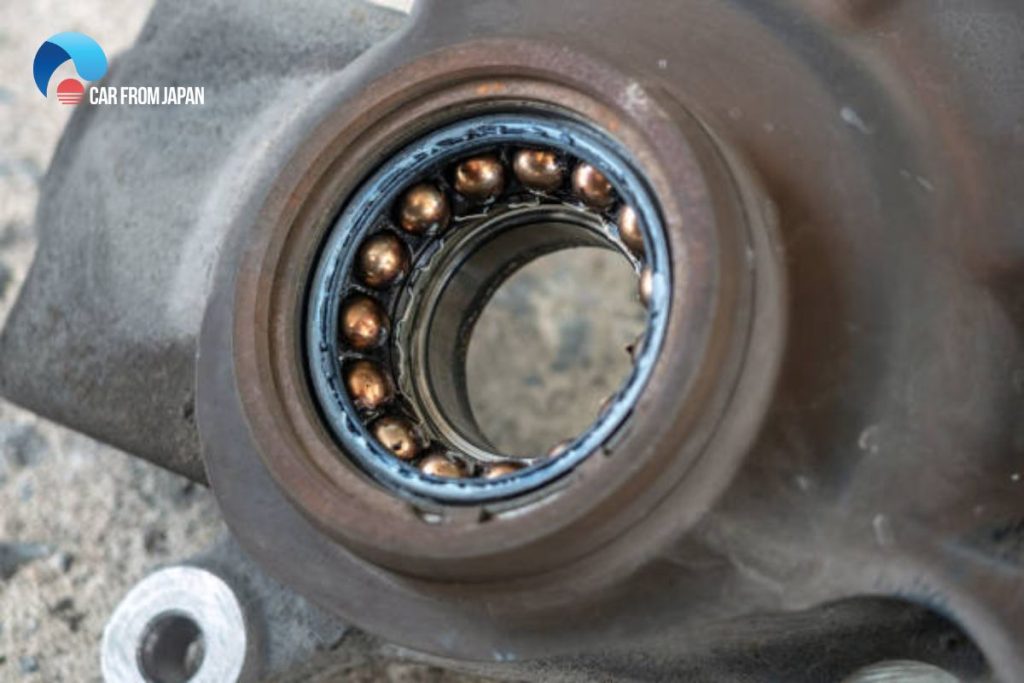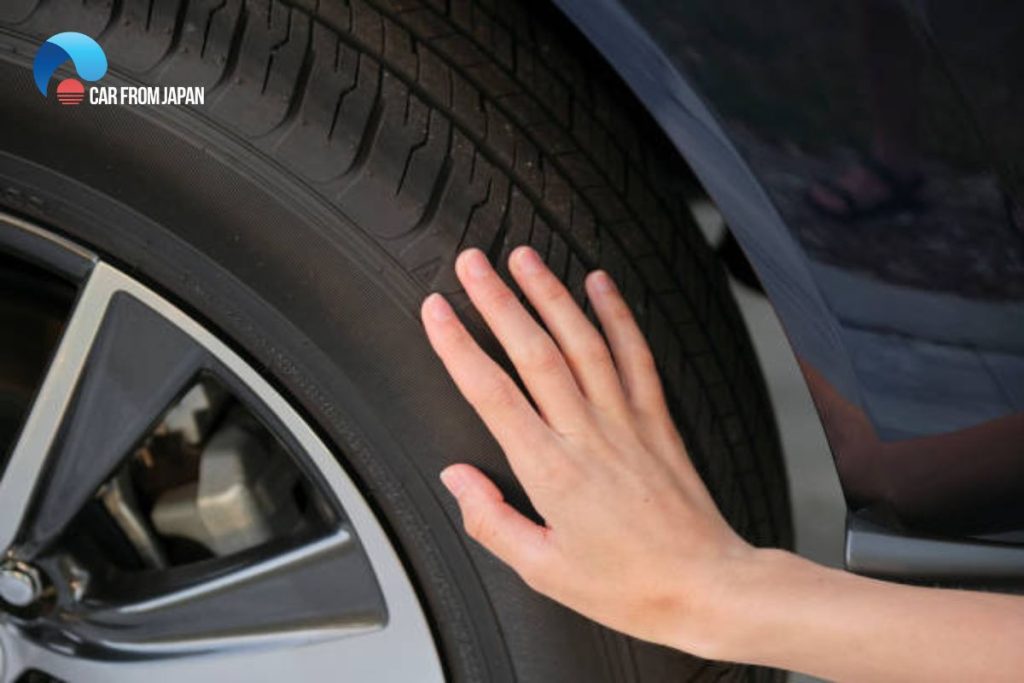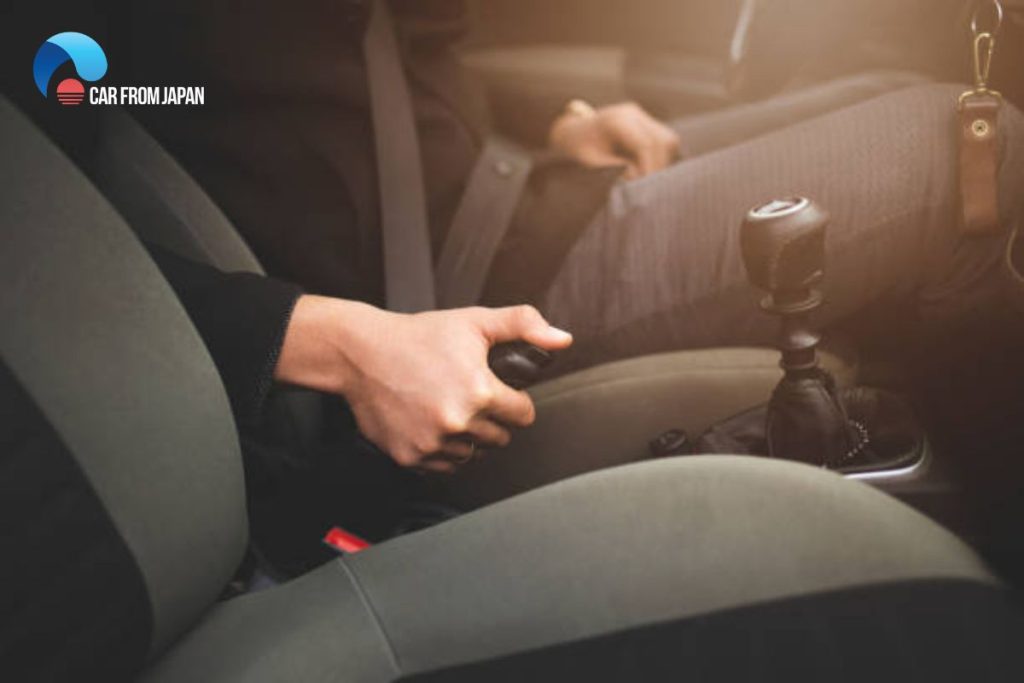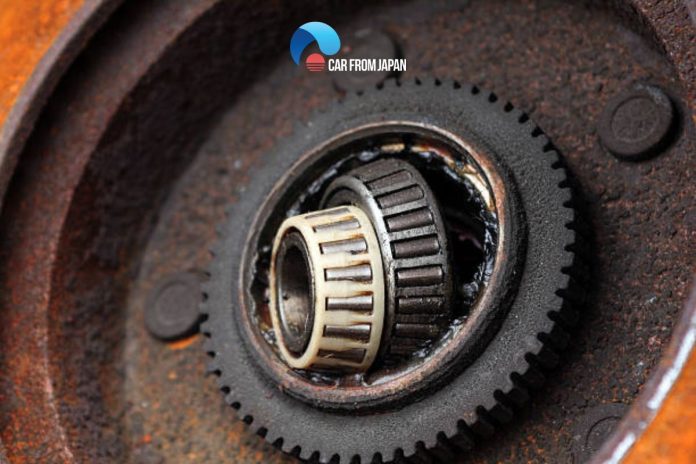If you hear a persistent low growling or humming sound that gets louder as you drive faster, you likely have a bad wheel bearing. The tough part isn’t knowing you have a problem—it’s figuring out which one of the four wheels is the culprit. How to tell which wheel bearing is bad? We’ll show you the simplest diagnostic trick you can do to pinpoint the exact wheel bearing that needs to be replaced.
What Is a Wheel Bearing?
Before going deeper into the bad bearing symptoms and the ways to single out the faulty one, you should know what it is and its functions.
A wheel bearing is a metal ring housing several steel balls. The ring, known as a race, fits inside a hub, which is a hollow metal piece at the center of the wheels.
The hub rolls on a metal axle shaft in order to lessen friction during the rotation of the wheels. These ball-shaped bearings are the most common type in today’s vehicles. There are also precision ball bearings and roller bearings.
Wheel bearings support the whole weight of a vehicle, and they don’t have a constant source of lubrication. For these reasons, they suffer a lot of abuse and wear out over time.

How to Tell Which Wheel Bearing is Bad?
Any system in an automobile has several small components that have to work and be integrated together for the car to run without any trouble.
But like everything else, these parts are prone to abuse and they show warning signs when they are about to give out.
Wheel bearings also display some symptoms when they cannot function to their full ability and are on the verge of failure. But how to tell which wheel bearing is bad: front or back?
All types of wheel bearings display similar symptoms when they are failing. Here’s how to tell which wheel bearing is bad:
Pay attention to noises
A grinding sound coming from the tires indicates overused bearings that don’t have enough lubrication to avoid grinding friction between metal parts.
The noise intensifies when the vehicle accelerates and it comes from either the front or backside, showing the position of the bad bearing.
Sometimes, it could be a rumbling noise when you are driving on a straight road and it escalates once you make a turn. This is how to tell which wheel bearing is bad by turning as the opposite side of the turn is the affected area.
A clicking sound also demands attention, as it is likely to come from a broken bearing in the hub assembly.
If a bearing is the culprit, the noise turns faster with acceleration. To identify which bearing is responsible, reduce the car’s speed and sway it gently.
If the clicking sound is muffled when you move to the left, the right wheel is likely to have a broken bearing.
Check the tires.

The condition of the tires is another easy way to tell that there is something wrong with the bearings. If a tire wears out unevenly, it’s most likely because the attached wheel bearing is damaged.
Tires will show signs of wear over time. It is quite normal if all of them deteriorate at the same rate.
Wobbly wheels
Another damaged bearing-related symptom is a wobbly wheel. In that case, the car feels loose or you find the steering less responsive, to be precise, at the time of driving.
When this happens, check each wheel by jacking up the vehicle. If the wheel assembly moves back and forth, the wheel bearing attached to it is definitely damaged.
Unstable wheels could be the aftereffect of some other problems too like a broken suspension or a misaligned chassis. A mechanic can pinpoint the exact reason by doing a road test.
Rigid wheels
Like loose wheels, stiff wheels are another safety problem and indicative of bad bearings. To find out which bearings are the culprits, you have to raise the car with a floor jack and check the front and rear wheels.
Just grab the tires and rotate the wheels. Effortless spinning means they are fine, but if one of them feels stiff, it must have a broken bearing.
Side pulling when braking

Apart from a defective bearing, this problem could result from a number of faulty components, including damaged brakes, worn-out rotor, defective equalizer, or a busted rotor.
However, if the reason is a broken bearing, it will eventually lead to loose brakes. Whenever you step on the brakes, the car acts like it has a mind of its own and pulls in a specific direction. Examine the bearings of the side the vehicle pulls to.
FAQs
How difficult is it to replace a wheel bearing?
Replacing a wheel bearing can vary in difficulty depending on your vehicle’s make and model. Some bearings are relatively easy to replace, while others may require specialized tools and knowledge.
It’s recommended to have a qualified mechanic handle the job if you’re unsure about your DIY skills.
How much does it cost to replace a wheel bearing?
The cost of replacing a wheel bearing varies depending on factors such as the vehicle’s make and model, labor costs in your area, and whether you’re using OEM or aftermarket parts. On average, it can cost anywhere from $100 to $600 per wheel.
Can I replace just one wheel bearing if it’s bad, or should I replace both sides?
While it’s not mandatory to replace both wheel bearings at the same time, it’s often recommended to do so. If one wheel bearing has failed, the other may not be far behind in terms of wear and tear. Replacing both can help ensure even performance and safety.
Check out this video from Way of the Wrench to learn how to 100% diagnose a bad wheel bearing!
Remember that if you suspect a bad wheel bearing, it’s essential to have it inspected and replaced by a qualified mechanic to maintain your vehicle’s safety and performance.
Final Thoughts
In the end, while that persistent humming or growling sound is annoying, it’s actually the clearest diagnostic tool you have. The trick is to realize that the noise changing when you turn the steering wheel immediately tells you which side of the car the problem is on. Never ignore a bad wheel bearing; it’s not just a noise, but a critical component failure that can affect your safety. By using simple listening and turning tests, you can accurately pinpoint the bad wheel and get it fixed quickly.



